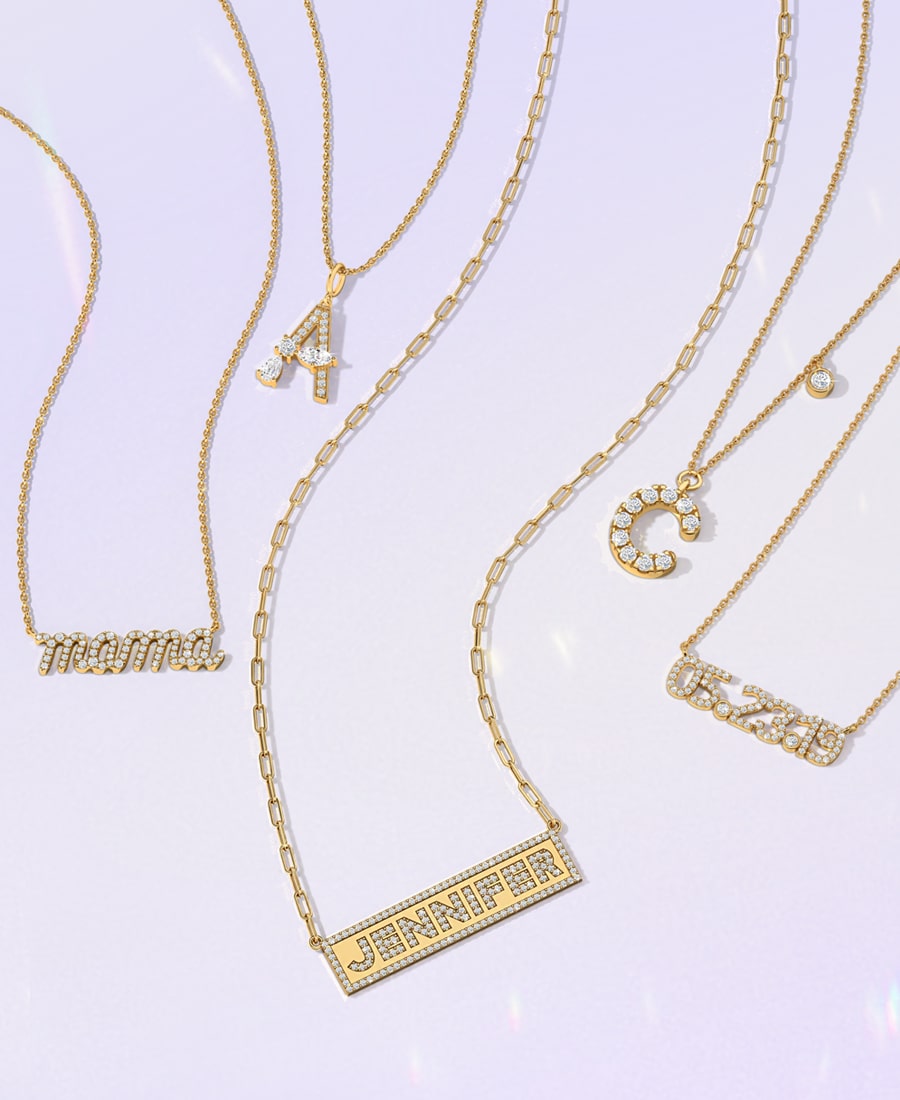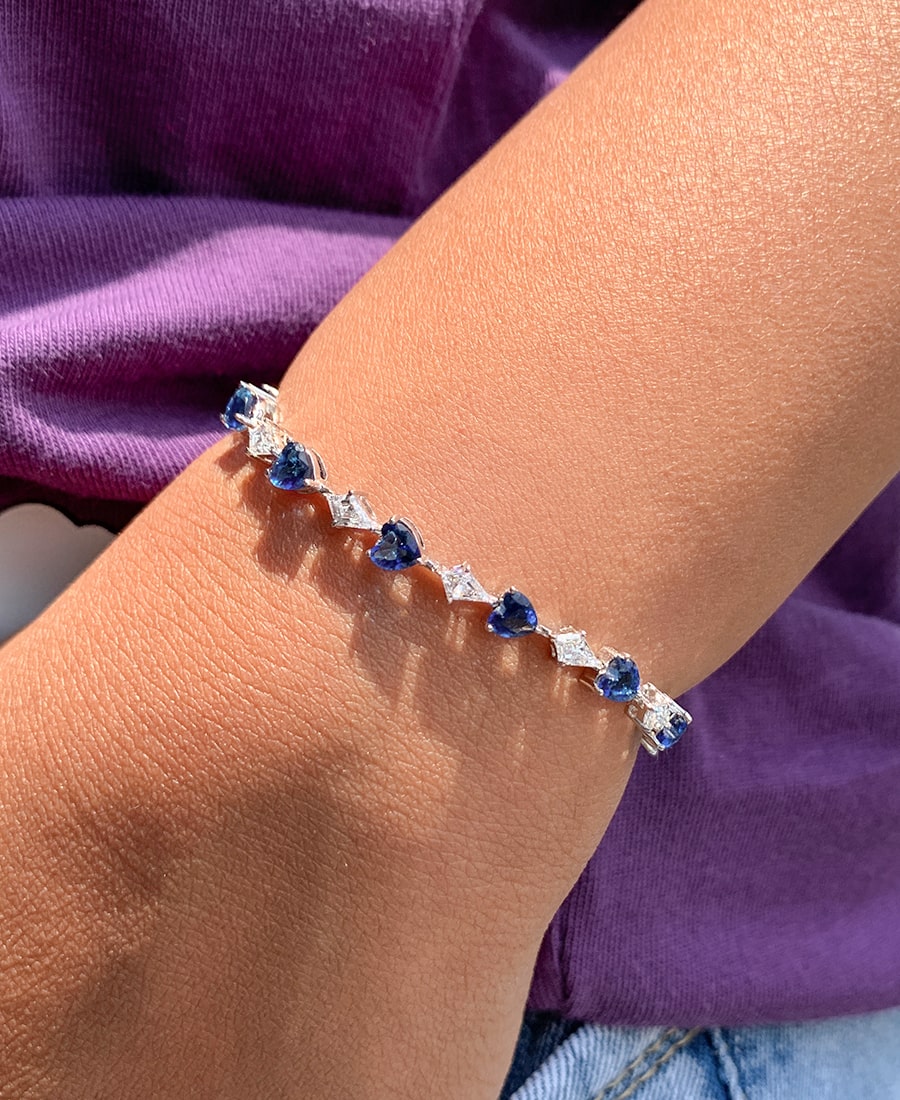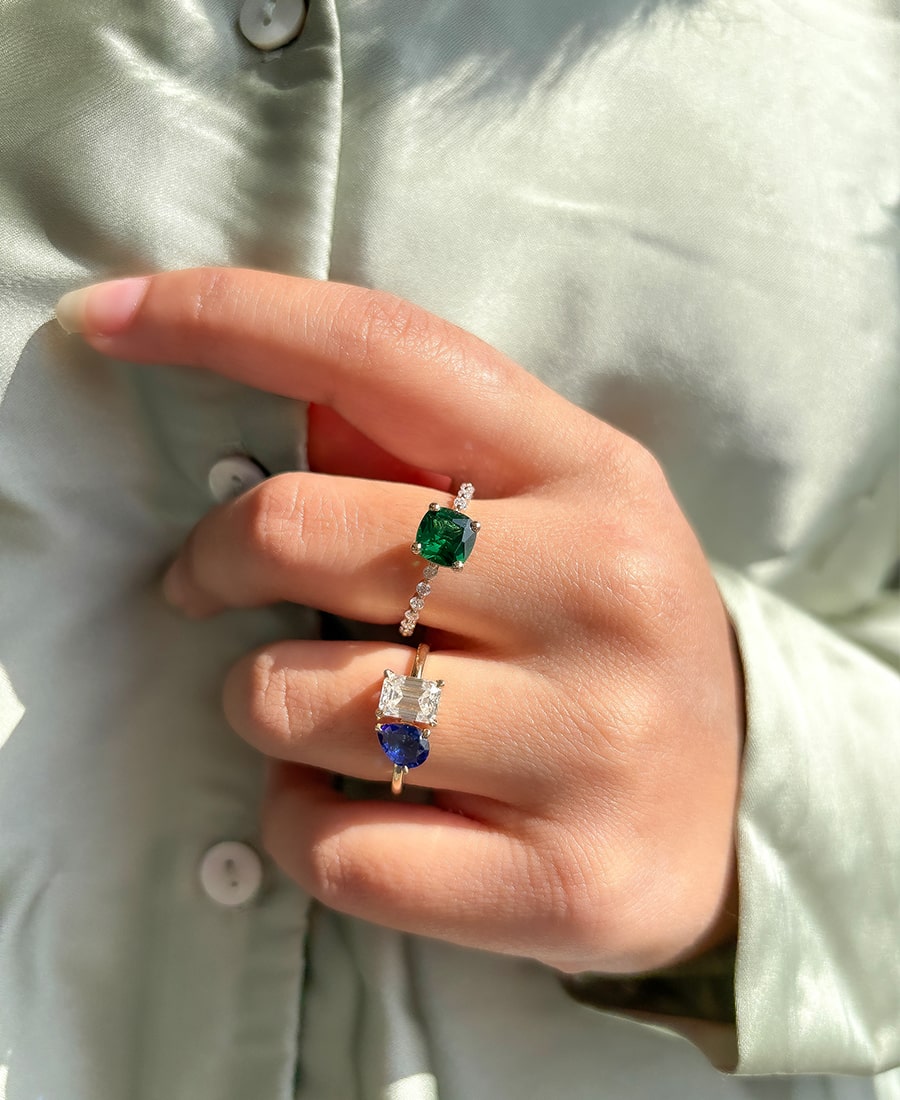
Round Cut Diamond Size Guide: MM to Carat Conversion
In today's fast-paced world, where decisions are often made at the click of a button, understanding the intricacies of diamond dimensions is more critical than ever.
Did you know that 62% of diamond engagement rings for women shoppers are baffled by the relationship between millimeters (MM) and carats when choosing a round cut diamond? Despite the emotional significance attached to these gems, the technicalities often leave buyers overwhelmed.
In this guide, we'll simplify the process, empowering you to make informed decisions about diamond dimensions and carat weight. Stay tuned to unlock the secrets of selecting the perfect sparkler that speaks volumes about your love story. Let's dive in.
Key Takeaways
- Understand mm-to-carat conversion for accurate diamond size assessment.
- Emphasize cut quality for enhanced brilliance, even in smaller diamonds.
- Opt for VS1 or VS2 clarity and G-H-I color grades for savings without sacrificing brilliance.
- Choose creative settings like halos to enhance the center diamond's appearance.
- Trust certifications from GIA or AGS for quality assurance.
- Prioritize ethical sourcing for conscious diamond purchases.
- Maintain diamond brilliance through regular cleaning and professional care.
Diamond Size: Does It Matter?
When shopping for diamonds, the focus often lands on carats and their impact on price and appearance. But size isn't the sole dictator of a diamond's allure. While larger diamonds typically come with higher price tags, other factors like cut, clarity, and color play significant roles in their brilliance.
Picture this scenario: a smaller diamond with exceptional cut quality, flawless clarity, and vivid color versus a larger one with less impressive attributes. In this comparison, the former is likely to shine brighter.
Thus, while size holds importance, it's not the only consideration. Always evaluate the complete package when searching for the ideal sparkler.
ROUND DIAMOND SIZE CHART
Round MM Size |
Round Carat Weight |
|---|---|
| 0.90 mm | 0.004 ct |
| 1.00 mm | 0.005 ct |
| 1.10 mm | 0.006 ct |
| 1.15 mm | 0.007 ct |
| 1.20 mm | 0.008 ct |
| 1.25 mm | 0.009 ct |
| 1.30 mm | 0.010 ct |
| 1.35 mm | 0.011 ct |
| 1.40 mm | 0.013 ct |
| 1.45 mm | 0.014 ct |
| 1.50 mm | 0.015 ct |
| 1.60 mm | 0.019 ct |
| 1.70 mm | 0.022 ct |
| 1.80 mm | 0.027 ct |
| 1.90 mm | 0.031 ct |
| 2.00 mm | 0.035 ct |
The Importance of Carat Weight in Round-Cut Diamonds
Today, let's explore diamond carat weight and its significance, especially for round-cut diamonds. A carat (ct) is simply the unit for measuring a diamond's weight, with one carat equaling 0.2 grams.
However, carat weight alone doesn't directly correlate with a diamond's perceived size. Enter millimeters (mm), which determine the actual visible size of the diamond.
Understanding diamond measurements is essential: carat weight indicates mass, while mm measurement reveals physical size. The cut quality of the diamond plays a crucial role in this relationship. Here's the breakdown:
Ideal Cut Diamonds: These gems boast optimal proportions, resulting in exceptional brilliance and fire. A well-cut 6 mm diamond might weigh around 0.75 carats.
Shallow Cut Diamonds: With wider bottoms and shallower tops, these diamonds can appear larger for the same weight but may lack sparkle.
Deep-Cut Diamonds: Featuring smaller tops and deeper bottoms, these diamonds may seem smaller for the same weight but can still shine brightly.
Knowing about these cut variations enables smarter diamond choices. Understanding mm measurements alongside carat weight is invaluable when selecting the perfect gem.
Factors Affecting Carat Weight Perception: Beyond the Millimeters
Ever wonder why some diamonds sparkle more than others? It all boils down to their quality. A well-cut diamond not only sparkles brighter but also appears larger and more dazzling compared to a poorly cut one of the same weight.
It's not just about size; it's about finding the right balance between spread (diameter) and depth. Aim for a spread-to-depth ratio between 61% and 63% for optimal brilliance and perceived size.
Visual Comparison: Diamond Sizes and Carat Weights
Interactive Chart:
Picture this: an interactive chart displaying different millimeter sizes ranging from 4mm to 8mm, matched with their respective carat weight ranges based on ideal cut proportions. This visual aid helps you understand the correlation between millimeters and carat weight across various diamond sizes.
Real-Life Examples:
Enhance the chart by incorporating top-notch images showcasing round-cut diamonds of different carat weights, such as 0.50 ct, 1.00 ct, and 1.50 ct, elegantly set in rings. This offers a practical comparison, illustrating how diamond size impacts its visual presence on the finger.
Practical Considerations When Choosing Diamond Size
Now that you've grasped the nuances of millimeters (mm) and carat weight, let's delve into some practical considerations:
- Budget Considerations: Diamonds are an investment, and size significantly impacts cost. To stay within your budget, it is essential to balance the desired diamond size with other quality factors like cut, clarity, and color.
- Finger Size and Style Preferences: Take a moment to consider your finger size. A larger diamond might overpower a petite finger, whereas a smaller stone might not impact a giant hand as much. Moreover, the Engagement ring's overall design can influence how the diamond is perceived. For instance, a halo setting can create the illusion of a larger stone.
Maximizing Diamond Size: Getting the Most from Your Budget
When selecting the perfect diamond within your budget, we're here to guide you. Here are practical tips to maximize your investment and create the illusion of a larger diamond without overspending:
Lower Clarity and Color Grades
Clarity: Opt for VS1 or VS2 grades, where slight inclusions are often invisible to the naked eye, saving you money without compromising brilliance.
Color: Consider near-colorless stones (G-H-I) for exceptional brilliance at a more affordable price compared to D-color diamonds.
Creative Settings and Design Choices
Halo Setting: Surrounding a smaller diamond with a ring of smaller diamonds creates the impression of a larger center stone.
Three-Stone Setting: Flanking a larger center stone with two smaller diamonds adds visual weight and sparkle.
Cathedral Setting: Elevating the center diamond enhances its perceived size, making it appear more prominent.
Conclusion
Choosing the right diamond is crucial. Understanding mm-to-carat weight helps in decision-making. Prioritize cut quality for brilliance, then consider clarity and color within your budget. Consult a jeweler for guidance.
Use mm to convert and grasp factors affecting diamond size perception. Find your perfect round-cut diamond with confidence.
Consider fluorescence, cut symmetry, and polish. For peace of mind, opt for certified diamonds from reputable labs.
Ethically sourced diamonds are vital. Clean and maintain your diamond regularly for longevity.
Considering these aspects alongside mm-to-carat weight, you'll confidently choose your ideal diamond that matches your style and values.
FAQs
1. What is a good carat weight for a round-cut diamond?
When it comes to a diamond-carat weight, there's no one-size-fits-all! Your budget, finger size, and style preferences are essential. 💖 Whether a 1-carat classic or a bit bolder, find the perfect sparkler that speaks to you!
2. How can I tell if a diamond is a good size for my finger?
Want to find the perfect diamond size? Here's a pro tip: Print a diamond-size chart, cut out circles representing different carat weights, and place them on your finger! 🤩 Seek help from reputable jewelers for expert advice.
3. Is a bigger diamond always better?
Quality over quantity! Pay attention to smaller diamonds with excellent cut, clarity, and color. They can sparkle just as brightly without breaking the bank.
4. What are some tips for getting the most sparkle for my money?
Pay attention to cut quality when choosing your diamond! Opt for slightly lower grades like VS1 or VS2 for clarity and G-H-I for color to save without sacrificing sparkle. ✨ Explore halo or three-stone designs for added brilliance.
5. Where can I find more information about round-cut diamonds?
Are you looking for top-notch diamond information? 💎 Check out the Gemological Institute of America (GIA) website for expert tips and advice! Whether you're a newbie or a pro, GIA has you covered. #diamonds 💍






